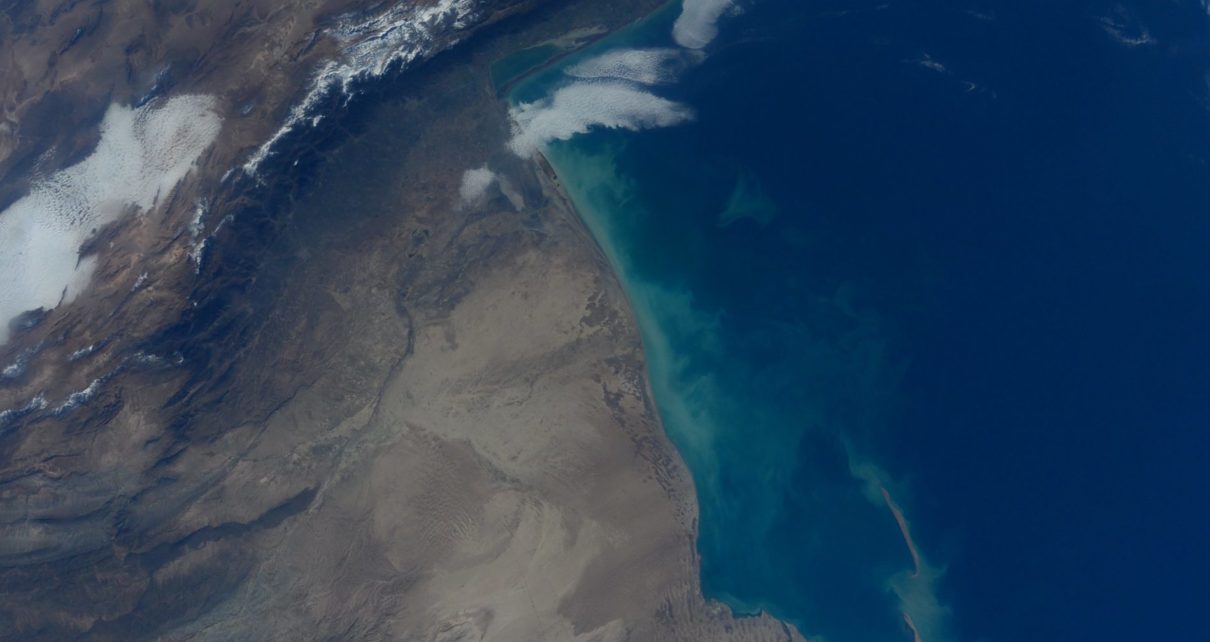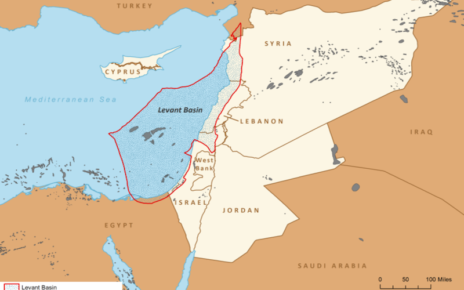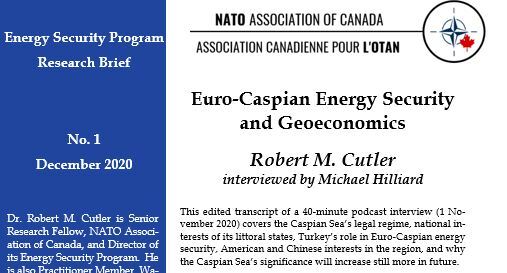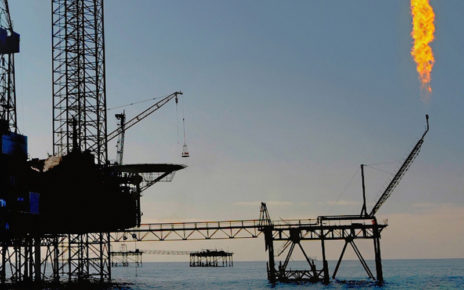Attempts have been made for a quarter of a century to find a way to get natural gas from Turkmenistan to Europe. One idea was the fully-fledged shore-to-shore Trans-Caspian Gas Pipeline (TCGP) to Azerbaijan and beyond for 31 billion cubic metres per year (bcm/y) of gas. Despite several attempts, this project has never been realized. Another project that has been around for almost as long is the shorter and smaller so-called “Platform Connection” for 10 bcm/y. It has recently re-appeared on the drawing boards of Caspian Sea energy infrastructure, but it looks set to disappear again as well. More European gas from the region will likely come from Azerbaijan, not Turkmenistan.
Background to the Current TCGP Project
There are two versions of the TCGP project. The best-known is the fully-fledged shore-to-shore pipeline of 31 bcm/y, about 300 kilometres long, where gas is sourced from Turkmenistan’s reserves on land. The other proposes to connect existing offshore platforms between the two countries in the Caspian Sea itself. It is projected to carry only 10 bcm/y, and its length would be about one-quarter of the other. The idea of the full TCGP has been around for 25 years, while the Platform Connection idea has been around for 15 years. Each has been the subject of pipeline project companies and planning more than once but, for different reasons at different times, neither has been built.
Now the Platform Connection is on the drawing boards again. This time the idea is piloted by TransCaspian Resources Inc. (TCRI), a Florida-based company headed by a former US ambassador to Turkmenistan, Allan Mustard. According to one report, there might be room for an additional 4 bcm/y in the South Caucasus Pipeline (SCP, also called the Baku-Tbilisi-Erzurum or BTE pipeline). This would be achieved with technical fixes and marginal engineering improvements to the existing infrastructure. However, it is to be anticipated even any marginal increases in the SCP’s capacity will be occupied by incrementally larger exports from Azerbaijan rather than by any offshore gas from Turkmenistan. To take a hypothetical example, it might be possible to increase the SCP throughput to 31 bcm/y at a cost of slightly less than $1 billion. According to Azerbaijan’s energy ministry, the transmission capacity of the current pipeline can be increased to 34 bcm/y.
With the technical fixes, there would hypothetically be room for 10 bcm/y from Turkmenistan via the Platform Connection. That is coincidentally the same quantity by which the European Union anticipates increasing its imports from Azerbaijan. As Commissioner for Energy Kadri Simson stated in July at the signing of a new Memorandum of Understanding (MoU), the agreement “underlines the strategic role of the Southern Gas Corridor in our diversification efforts. Azerbaijan has already increased the natural gas deliveries to the EU and this trend will continue, with up to 4 billion cubic metres of additional gas this year and volumes expected to more than double by 2027.”
The Crux of the Present Situation
The private-company project with Turkmenistan is not a competitor with Azerbaijan for the European market. The Azerbaijani flow is well-established, and the parties involved have seen past confident mutual expectations to be justified. Turkmenistan insists on selling gas at its border, but Azerbaijan has demonstrated experience in commercial arrangements. Azerbaijan has also shown respect over the long term for signed contracts, and it has all the domestic legal regimes (accounting, insurance, etc.) to support them. Turkmenistan’s legal system, on the other hand, is not well-developed, and it has a reputation for depending upon the whim of the leader. Indeed, the whole TCRI project seems to depend on and to try to play upon whatever personal relationship may exist between Ambassador Mustard and the Turkmen leadership, although it was Serdar Berdimuhamedow’s father Gurbanguly who was president when Mustard was in Ashgabat.
The crucial point, however, is that such marginal quantities as 4 bcm/y or even 10 bcm/y would not be enough to encourage Ashgabat to export to Europe, even if it had the desire to do so. And it does not have any desire to do so, just as it has not had such a desire for the past two decades. The only way for Turkmenistan to export gas to Europe today—given the restrictions on sponsorship and funding of pipelines that were self-imposed by all the major international financial institutions and the European Union in 2019—is for private interests or and/or governments to spend $30 billion to build the equivalent of the old Nabucco pipeline project.
And indeed, $30 billion is the figure that has been cited officially and also estimated unofficially as the price for building the “connector” for Turkmenistan: without explicitly saying that it would connect all the way to Baumgarten (Austria). It is possible to make a back-of-the-envelope estimate of how this figure was reached. Such a calculation would be based upon estimated current costs considering the significantly higher price of steel needed for manufacturing pipelines, as well as savings that can be attained from piggybacking on existing infrastructure. This would be only the most general first-cut gross estimate, and it would omit the costs of technical engineering details, but it would give an idea of the work involved.
Conclusion: Europe’s Prospects for Caspian-region Gas Imports
It is worth mentioning that the TAP would not be involved, since the volume of the TAP (Trans-Adriatic Pipeline) will be doubled from 10 to 20 bcm/y, dedicated as more Azerbaijani gas comes online and becomes available. As for the Turkish offshore gas in the Black Sea, being developed with help from SOCAR, this is destined for domestic consumption, not for export.
That $30 billion calculation also assumes that the increasingly Moscow-oriented government in Tbilisi would agree to doubling the SCP. That is not to be taken for granted, since it seems very likely that it was obstruction by the state monopoly Georgian Oil and Gas Corporation (GOGC, an umbrella recombining three state monopolies inherited from the Soviet era, and which has long captured the country’s energy ministry) that prevented any progress in Georgia on the combined shore-to-shore TCGP plus Georgia–Romania White Stream project during the late 2010s when the European Commission had designated this as a Project of Common Interest and provided modest funds for feasibility studies and initial works.
The “dirty little secret” is that there is no room in the pipelines that now exist for the relatively small amount of Turkmen gas in the offshore deposit to reach Europe, and no incremental work on them will make it happen. It is an error to suppose that an expanded TANAP can carry gas from Turkmenistan. The SCP is also an integral part of the SGC. It has a current maximum volume of 24 bcm/y, and this volume is fully subscribed. There is no more room at present in the SCP for additional gas from any supplier.
Azerbaijan put 22.3 bcm/y into the SCP in 2022 and has put 15.8 bcm/y into it in the first eight months of 2023, of which Georgia took 1.5 bcm/y and Turkey took 6.7 bcm/y for domestic consumption. The throughput of SGC for the first eight months annualizes to 23.7 bcm/y, equivalent to the pipeline’s effective capacity. Moreover, the SCP is operated by BP, which exploits the Shah Deniz deposit that is expected to produce additional quantities of gas in the future. BP, the Turkish state company TPAO, and SGC Midstream together comprise a majority stake in the SCP. SGC Midstream is 51 percent owned by the Azerbaijani Republic and 49 percent owned by SOCAR. These are the entities that decide what gas the SCP will carry. As for TANAP, SOCAR is still the operator and majority owner with 58 percent of equity.
It is reported that Turkmenistan’s President Serdar Berdimuhamedow will visit Brussels this autumn, where he will be coaxed and cajoled by different Eurocrats to accept the U.S. private-company proposal for the Platform Connection option. It would be extremely surprising for him to take any steps to reverse Turkmenistan’s longstanding policy on the question, established by his father Gurbanguly Berdimuhamedow, who was president from 2006 to 2022 and is still reputed to control many aspects of the country’s political life from behind the scenes. Barring unforeseen financial largesse by unknown parties, Europe’s gas, and more of it, will come from Azerbaijan, not Turkmenistan.
Photo: ‘South of the Caspian Sea’ by Samantha Cristoforetti. Licensed from Flickr under CC BY-NC 2.0.
Disclaimer: Any views or opinions expressed in articles are solely those of the authors and do not necessarily represent the views of the NATO Association of Canada.




